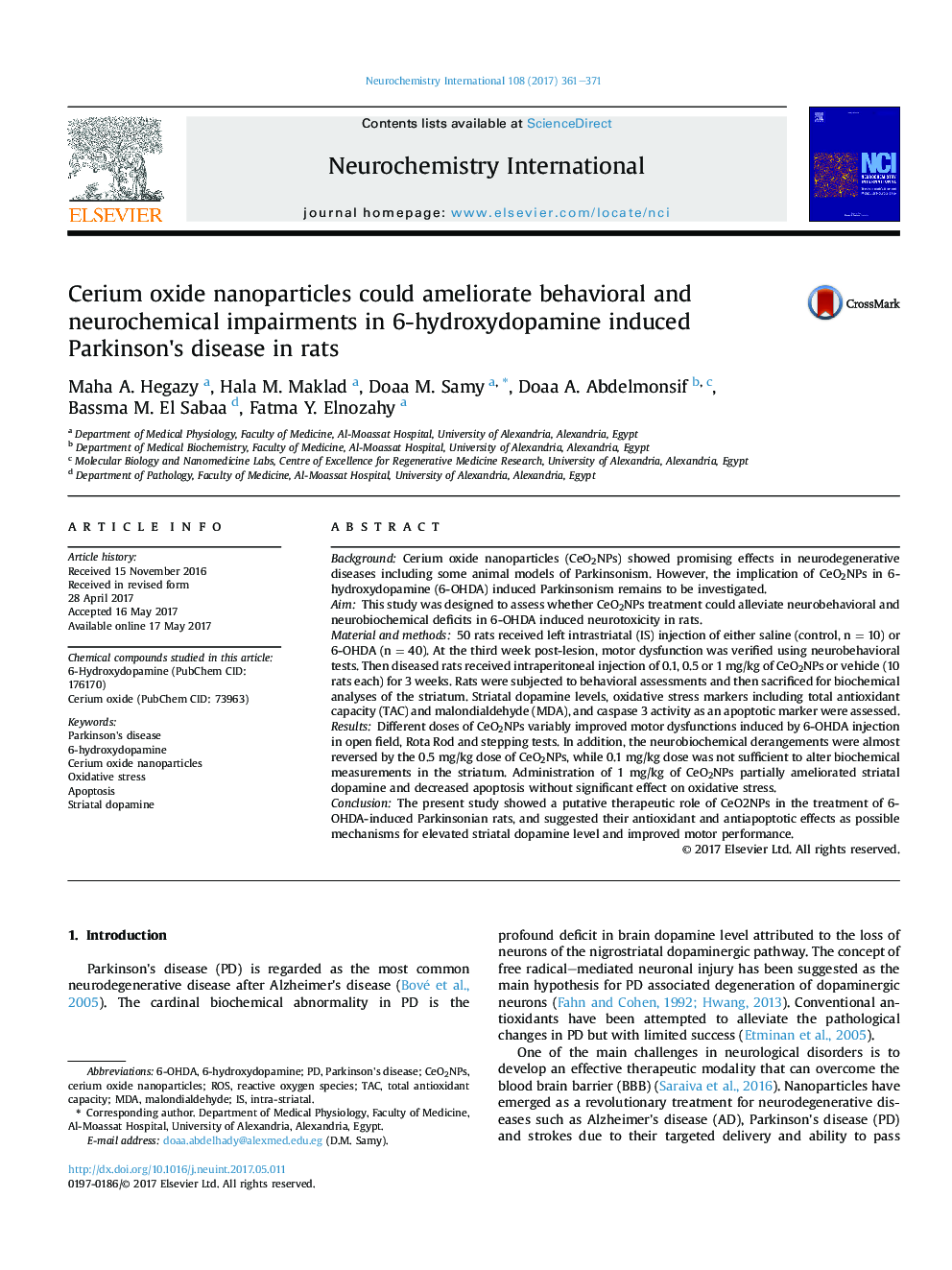| Article ID | Journal | Published Year | Pages | File Type |
|---|---|---|---|---|
| 5534727 | Neurochemistry International | 2017 | 11 Pages |
â¢CeO2NPs treatment improved motor deficits in 6-OHDA induced-Parkinsonism in rats.â¢CeO2NPs increased striatal dopamine and ameliorated oxidative stress and apoptosis.â¢CeO2NPs at 0.5 mg/kg dose showed superior therapeutic effects than 0.1 and 1 mg/kg.â¢The 1 mg/kg CeO2NPs dose seemed neurotoxic to striatal tissues.
BackgroundCerium oxide nanoparticles (CeO2NPs) showed promising effects in neurodegenerative diseases including some animal models of Parkinsonism. However, the implication of CeO2NPs in 6-hydroxydopamine (6-OHDA) induced Parkinsonism remains to be investigated.AimThis study was designed to assess whether CeO2NPs treatment could alleviate neurobehavioral and neurobiochemical deficits in 6-OHDA induced neurotoxicity in rats.Material and methods50 rats received left intrastriatal (IS) injection of either saline (control, n = 10) or 6-OHDA (n = 40). At the third week post-lesion, motor dysfunction was verified using neurobehavioral tests. Then diseased rats received intraperitoneal injection of 0.1, 0.5 or 1 mg/kg of CeO2NPs or vehicle (10 rats each) for 3 weeks. Rats were subjected to behavioral assessments and then sacrificed for biochemical analyses of the striatum. Striatal dopamine levels, oxidative stress markers including total antioxidant capacity (TAC) and malondialdehyde (MDA), and caspase 3 activity as an apoptotic marker were assessed.ResultsDifferent doses of CeO2NPs variably improved motor dysfunctions induced by 6-OHDA injection in open field, Rota Rod and stepping tests. In addition, the neurobiochemical derangements were almost reversed by the 0.5 mg/kg dose of CeO2NPs, while 0.1 mg/kg dose was not sufficient to alter biochemical measurements in the striatum. Administration of 1 mg/kg of CeO2NPs partially ameliorated striatal dopamine and decreased apoptosis without significant effect on oxidative stress.ConclusionThe present study showed a putative therapeutic role of CeO2NPs in the treatment of 6-OHDA-induced Parkinsonian rats, and suggested their antioxidant and antiapoptotic effects as possible mechanisms for elevated striatal dopamine level and improved motor performance.
